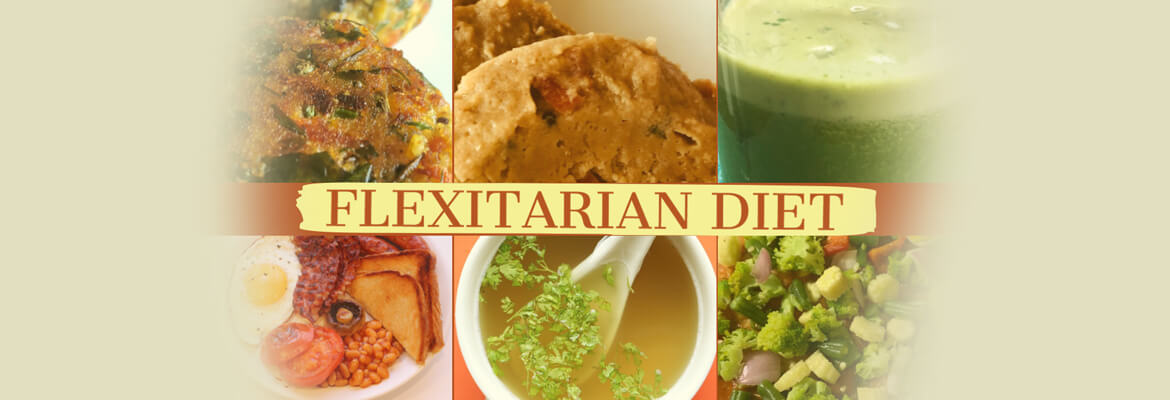24
2021
IS THE FLEXITARIAN DIET CLOSE TO THE MACROBIOTIC DIET?

Is the Flexitarian diet close to the Macrobiotic diet?
While Macrobiotic is known to be a stringent approach when it comes reversing lifestyle diseases, I’d like to say that I was taught by my teacher John Kozinski to stay ‘wide’ which means stay ‘flexible,’ within the Macrobiotic framework. What would this imply? Simply put, if the Macrobiotic philosophy eschews dairy, that is it’s maintains don’t include dairy; it also says make for balance with it, if you have it, or use the right dairy or then use alternative sources like nut milk or grain milk or if you’d like to eat animal protein, then make balance by eating a lot more vegetables and leafy greens. This is what a ‘flexitarian’ approach really means from a Macrobiotic standpoint.
However, in today’s health diaspora a ‘flexitarian’ diet has many connotations. It could mean, you are a vegetarian most times, but also choose to eat some meats. You are perhaps not a strict vegan, and also include ghee (like me). The ‘flexitarian diet’ was actually coined by Dawn Jackson Blatner, to actually help people maximize their vegetarian approach and yet gain from eating animal protein (in moderation). Here are some differences between the ‘flexitarian’ and ‘Macrobiotic’ approach.
| FOODS | FLEXITARIAN | MACROBIOTIC |
|---|---|---|
| Plants | Eat mostly fruits, vegetables, whole grains, legumes | Eat mostly fruits, vegetables, whole grains, legumes |
| Dairy | Some allowed | Not allowed |
| Animal protein | In moderation | More plant. Animal protein in moderation |
| Processed foods | Some allowed | Not allowed |
| Sugar | Some allowed | Not allowed |
Recently, Mark Hyman M.D., has come out with a book that puts forth a ‘Pegan Diet,’ and is based on functional medicine. He explains how to take the best aspects of a Paleo diet (whole foods, good fats, limited refined carbs, limited sugar and combine this with a vegan diet (no dairy and fresh vegetables). He says it’s a more flexible-style of eating and is a more nutritious approach. I’d like to say that the Macrobiotic approach is very close to the ‘Pegan diet.’
Most dietary approaches that come about in the Western world stem from the typical SAD diet (Standard American Diet). We Indians are not even close to this, as we eat homecooked meals most of the time, and are following a healthy approach to eating. However, I will say this, with the advent of the economic boom; and fast-food places opening up, we are walking away from traditional styles of eating and hence problems come about. In terms of staying flexible, most Indians do stay flexible.
A diet must have the ability to control inflammation, help the gut microbiome, address the cells of your body, help the circulatory system, provide the brain with foods that fire the neurotransmitters, keep the messengers i.e., the hormones going, and control your stress response. I would go one step further and also say that foods have their own energy and must have the ability to provide the energy you seek to change things for you; this is one aspect the Macrobiotic diet addresses. The ‘energetics’ of foods help you understand why the imbalance is created between food that are ‘yin’ in nature (sugar, excessive fruit juices, refined flours); or ‘yang’ in nature (meats, eggs, salt) and why we crave the way we do, or even why we are swinging between these two extremes allday long. Also, it is important when adapting to a ‘flexible’ approach that works for you, one must keep away from foods or beverages that will deplete you: for example, too much reliance stimulants like coffee, Indian tea, alcohol, marijuana will cause issues.
A Macrobiotic approach can be as ‘flexible’ as you’d like it to be; if you are in good health condition (by this I mean not suffering with any health issues). You can paint the picture you want, on your canvas. If you’d like to be vegan, and yet eat some eggs; sure go-ahead, but make balance by including more greens, to account for the ‘yang’ (contracted, dense) energy of eggs. If you’d like to eat a dessert (with sugar) then account for its ‘yin’ (expansive energy) by including some whole grain (like brown rice) to combat the expansive effects that may make you want to eat more sugar later on. If you like every Indian, add a lot of salt in your diet, counteract the ‘yang’ effects of salt by adding good quality ‘yin’ from vegetable juices that are sweet, like a carrot juice. This is an added feature in adapting to a diet for life, that a Macrobiotic approach brings; along with functional foods i.e., foods that offer you a nutritional health value but offer more benefits; like whole grains that feed gut bacteria., herbs and spices: that work as adaptogens.
Choose a diet that’s ‘flexible’ but moving towards creating balance. Not a diet that’s ‘flexible’ so you can indulge in the wrong foods, and steer the body to eating the right foods. For example, a diet that allows for some sugar is not great.
